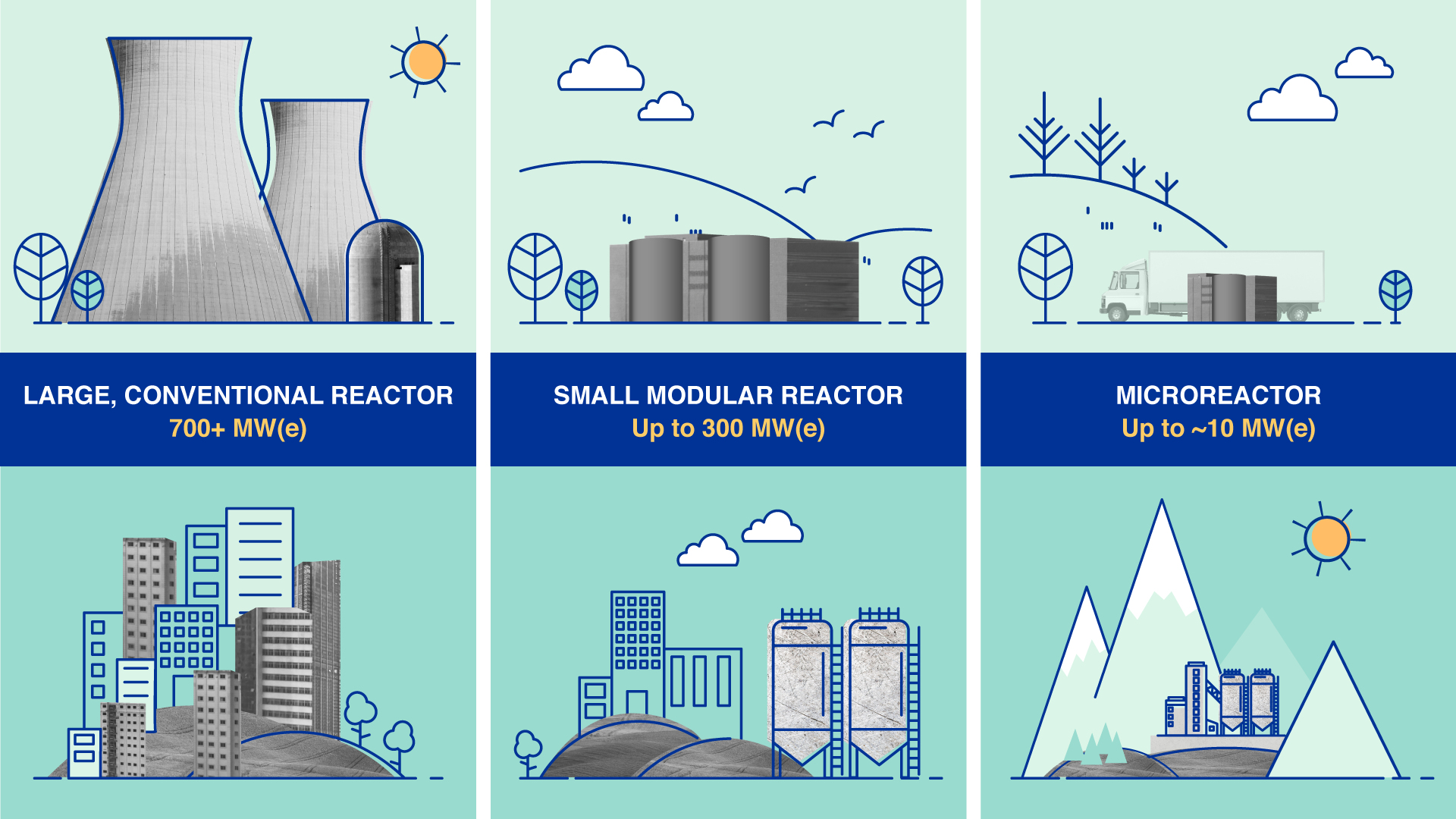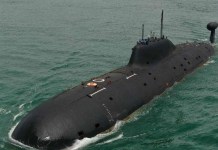Japan’s collective consciousness is still haunted by the nuclear disaster that destroyed the north-eastern part of this island country a decade ago. The second-worst nuclear disaster after Chernobyl changed the way Japan was to approach nuclear energy for years to come.
‘Advantage Russia’: As Biden Warns Moscow Of ‘Devastating Sanctions’ Over Ukraine Crisis, Will Putin Be The ‘Ultimate Winner’?
However, now the hesitations of the past seem to be fading away as it is set to give nuclear technology an all-new shot.
Tokyo is ushering in a series of ambitious next-generation nuclear projects that might fuel Japanese industry for decades and help erase the stain left by the Fukushima tragedy on the country’s reputation.
Collaboration with scientists and companies in the United States will be a key component in the development of future nuclear energy technology. Japan’s Minister of Industry Koichi Hagiuda had a virtual meeting with US Energy Secretary Jennifer Granholm on January 6 during which they agreed to cooperate in the development of plutonium-burning fast reactors and advanced energy plants based on small modular reactors (SMRs).
Hagiuda told Granholm that Tokyo will encourage more local energy companies to join an international program to test fast reactors and small modular reactors, or SMRs, developed by US companies such as NuScale Power LLC and others.
Important development: Japan vows to boost next-generation small modular nuclear technology development in enhanced private and public sector Japan-US cooperation. Hats off, @SecGranholm @METI_JPN ! https://t.co/sQJYGwHCbr
— Kenneth Weinstein (@KenWeinstein) January 7, 2022
The meeting, Hagiuda’s first since taking office last year, took place at a time when Japan is stepping up its efforts to develop advanced nuclear power technologies.
The Japanese government intends to promote domestic enterprises that participate in international tests incorporating such technology as part of its national energy plan. The United States and France are among the other international participants in the initiative.
China’s ‘Largest & Most Advanced’ Destroyer Gets Combat-Ready While PLA Navy To Get More Of Type-055 Warships
It was in October last year that the conversation around nuclear energy had started again under the premiership of Fumio Kishida but fell short of any announcement on new construction or technology development.
Along with his cabinet ministers, the Japanese Prime Minister backed a fundamental energy policy that did not include any plans for nuclear reactor development or replacement; instead it focused solely on the restart of safe reactors.
A Japan court rules a nuclear reactor may restart after the 2011 Fukushima disaster, in a bid to boost Prime Minister Abe’s energy push https://t.co/h94zBAfze1 pic.twitter.com/t6ku6FHipu
— Bloomberg Quicktake (@Quicktake) September 25, 2018
Despite pleas from electricity and steel industry groups to enable new construction and replacement in order to ensure energy security and reduce greenhouse gas (GHG) emissions, the government did not change the prospects for the nuclear sector from the draught plan released in July.
However, in a noteworthy development that could now be seen as a premise for this new technology development, the Japanese government made it clear in its Sixth Strategic Energy Plan, released in October that it intends to move on from the events in northeast Japan.
Following the March 2011 earthquake (magnitude-9) in Japan, a tsunami was triggered that caused the meltdown of three of the Fukushima plant’s six reactors. The resulting disaster wreaked havoc in the country.
Overcoming Nuclear Hesitation With US Support
The Japanese approach towards nuclear energy is guided by two key objectives as could be deciphered from its Sixth Strategic Energy Plan. It aims to pursue nuclear energy to achieve its carbon neutrality goals by 2050 and to reduce the cost of power. These two objectives could be believed to be the bedrock of Japan’s nuclear tech cooperation with the United States.
In 2018, Japan and the United States had signed a memorandum of understanding to “advance the two countries’ worldwide leadership role” in civil nuclear energy.
“The Japan Atomic Energy Agency [JAEA] and Mitsubishi Heavy Industries are cooperating with US nuclear power start-up TerraPower simply because they have the required skills and knowledge on fast reactors,” says Tomoko Murakami, manager of the nuclear energy group at the Institute of Energy Economics Japan.
In the first stage of the alliance, Tokyo would spend 900 million yen ($7.8 million) on improving the AtheNa sodium experimental plant in Ibaraki prefecture for fast reactor development. The facility operated by Japan Atomic Energy Agency (JAEA) is already in operation, and an MoU on technological cooperation with TerraPower is expected to be inked by the end of January, SCMP reported.
The system is meant to extract heat from a reactor core using liquid sodium to generate electricity. The facility will also be used in the cooperative development of a next-generation fast reactor with the United States, while work is also underway at another location, Joyo, to study the impact of neutrons on fuels and other equipment using sodium as a coolant.
US Navy Says Hypersonic Missiles, Lasers Weapons Key Highlights Of Its Next-Generation DDG(X) Warship
Although earlier research on fast reactors with France was halted, the US has now joined the broader effort to promote the nuclear fuel cycle, in part because both countries are looking for ways to reduce the volume and toxicity of high-level radioactive waste generated by power plants.
Earlier, Japan Times had reported that the JAEA and Mitsubishi Heavy Industries Ltd are planning to develop a high-tech nuclear reactor in Wyoming in collaboration with the United States and Bill Gates’ venture company.
SMRs Key To Japan’s Nuclear Initiative 2.0
Small Modular Reactors (SMRs) are another high-priority research field, with technology progressing to the point that the first units could be operational in Japan by the end of the decade.
An SMR is a nuclear reactor that is built as a single module and transported to the installation site, allowing for improved quality control and shorter construction timeframes. SMRs are often partially buried underground and offer additional safety features above currently operating conventional reactors are present in them.

While pumps are necessary to circulate coolant in a traditional reactor in the case of an accident, SMRs may remove heat by natural coolant circulation. They also demand a lower initial commitment, with returns occurring in five years rather than the 20 in the case of conventional reactors.
With American experience in the technology and two of its companies deeply invested in it, Japan has a natural partner to cooperate with. Terrapower is a start-up, which is rigorously working on SMR technology and is partially funded by the American billionaire and philanthropist Bill Gates.
Another US giant working on this advanced next-generation technology is NuScale Power which has partnered with the US government on SMR development for third countries.
Skepticism About Nuclear Energy & Safety
Support from some quarters for a renewed push towards nuclear energy has existed in Japan for a while now. Successive Liberal Democratic Party governments, which have been accused of having close ties to the country’s powerful power businesses, have quietly committed to nuclear energy, but the latest plans are set to scale up that commitment.
The need to dramatically reduce carbon dioxide emissions and secure energy that is not dependent on imports from other parts of the world, making it easy to disrupt in the event of a geopolitical crisis could have been the driving force behind Japan’s support for nuclear energy, according to Tomoko Murakami.
Nonetheless, there is considerable skepticism of nuclear energy in Japan, and critics are concerned that the government is moving ahead with alliances with the United States to create new technologies while there are so many unanswered questions about safety, according to the SCMP.
“All the media coverage has become very positive about these new developments and the technology alliance with the US, but we must remember that at the moment fast reactor technology exists only on paper and there are no guarantees that it will be a success,” Hajime Matsukubo, secretary-general of the Tokyo-based Citizens’ Nuclear Information Centre (CNIC) was quoted as saying.
Rafale-M OR F-18 Super Hornet: Indian Naval Commander Decodes The Ideal Fighter Aircraft For INS Vikrant
“Japan has already spent 1 trillion yen [US$8.7 billion] on fast reactor research and another 1 trillion yen on decommissioning the experimental Monju reactor, to say nothing of what is being spent on all the work at Fukushima and decommissioning all the other reactors around the country. So it’s ridiculous to spend even more on nuclear technology that so many people do not want and do not trust,” he added.
The billions spent on nuclear power, according to CNIC, would have been far better used in establishing a local renewable sector that could have tapped into geothermal, wind, wave, solar, and other sources — and would have been the envy of the world.
It also warns that due to Japan’s unstable geology, a replay of the Fukushima accident – or a situation far worse –always remains a possibility.
So while the idea of cooperation and the results that it might entail for Japan’s climate and economy appear to be valid and attractive goals, there remains some clear disgruntlement in Japan regarding building new reactors. Only time will tell if Japan embraces new nuclear technology overcoming resistance from certain domestic quarters.
- Contact the author at sakshi.tiwari9555@gmail.com
- Follow EurAsian Times on Google News




